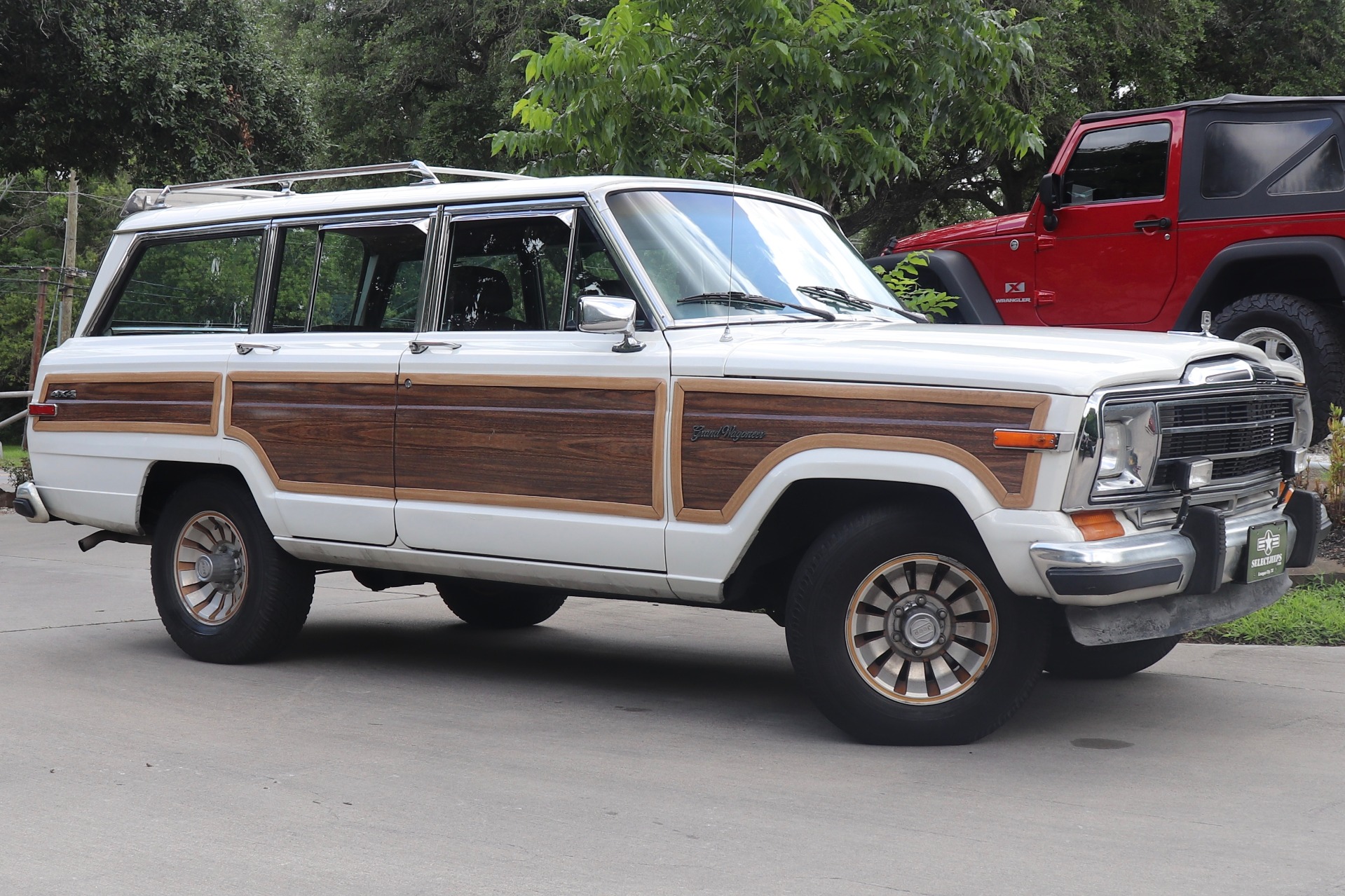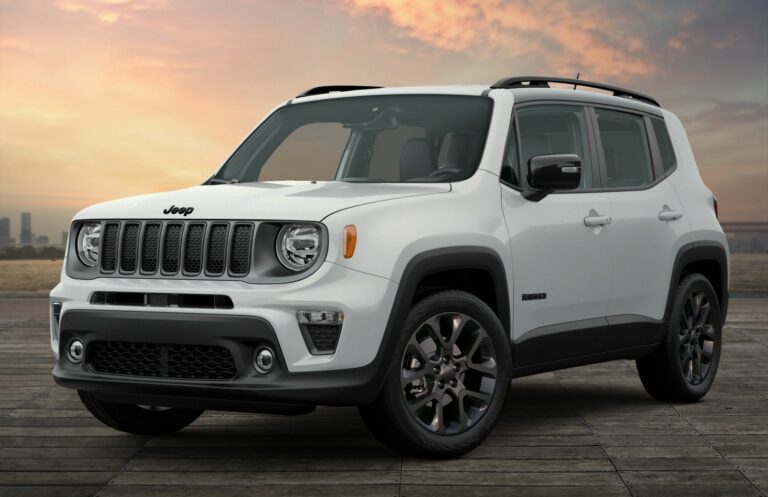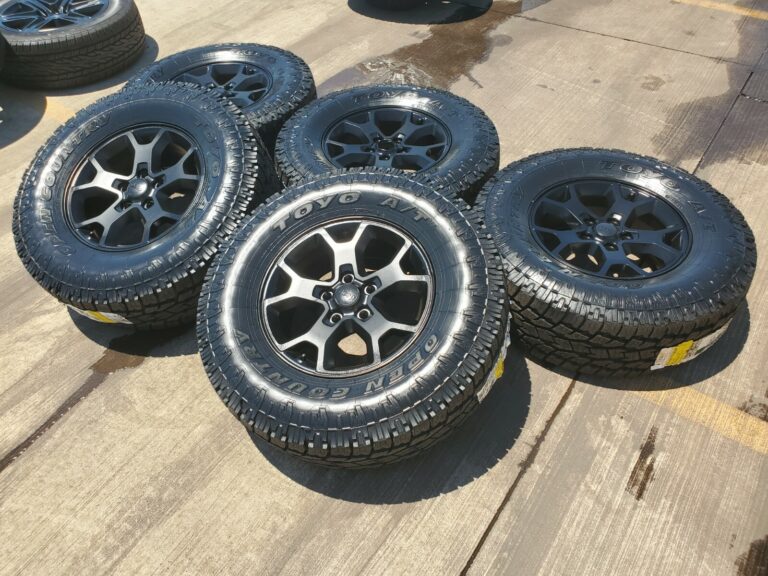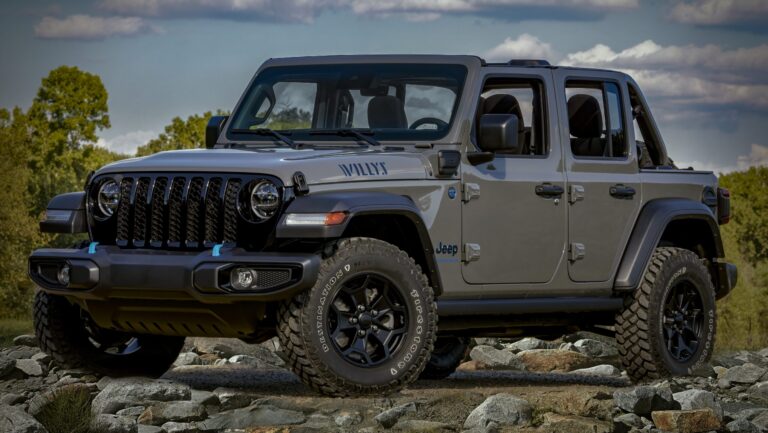1987 Jeep Grand Wagoneer For Sale: A Comprehensive Buyer’s Guide
1987 Jeep Grand Wagoneer For Sale: A Comprehensive Buyer’s Guide jeeps.truckstrend.com
Introduction: The Enduring Allure of a Classic Icon
The year 1987 might evoke images of big hair, neon colors, and groundbreaking music, but in the automotive world, it also marked a pivotal point for a vehicle that would transcend mere transportation to become a cultural icon: the Jeep Grand Wagoneer. More than just an SUV, the Grand Wagoneer, particularly the 1987 model, represents a unique blend of rugged capability, surprising luxury, and timeless Americana. It was, arguably, the original luxury SUV, setting the standard long before the term became commonplace.
1987 Jeep Grand Wagoneer For Sale: A Comprehensive Buyer’s Guide
For those in the market for a classic vehicle that offers both a commanding presence and a comfortable ride, the prospect of a 1987 Jeep Grand Wagoneer for sale is incredibly compelling. It’s not merely a purchase; it’s an investment in a piece of automotive history, a statement of style, and an entry into a passionate community of enthusiasts. This comprehensive guide aims to equip potential buyers with the knowledge and insights needed to navigate the market, understand the nuances of this remarkable vehicle, and ultimately find the perfect Grand Wagoneer to call their own.
Why the 1987 Grand Wagoneer Still Captivates
The enduring appeal of the 1987 Jeep Grand Wagoneer stems from a combination of factors that are rarely found in modern vehicles. It’s a testament to thoughtful design and a focus on durability, wrapped in an undeniably charming package.
Legacy and Icon Status: The Wagoneer line, introduced in 1963, boasts one of the longest production runs of any single automotive platform. By 1987, it had evolved into the "Grand" Wagoneer, representing the pinnacle of its luxury-oriented design. It was the vehicle of choice for ranchers, suburban families, and celebrities alike, cementing its status as an aspirational symbol.
Design Aesthetic: Perhaps its most recognizable feature is the iconic simulated woodgrain paneling, which, combined with its distinctive boxy silhouette, chrome accents, and commanding grille, gives it an unmistakable vintage charm. This design is both nostalgic and incredibly stylish, standing out in a sea of modern, aerodynamic SUVs.
Interior Comfort and Features: For its era, the 1987 Grand Wagoneer was remarkably well-appointed. Plush leather seating (often in desirable "Cordovan" or "Nutmeg" colors), power windows, power locks, air conditioning, cruise control, and a sophisticated (for the time) sound system made long journeys comfortable. The spacious cabin provided ample room for passengers and cargo, making it a practical family vehicle.
Off-Road Capability: Beneath the luxurious exterior lay true Jeep DNA. Equipped with the robust Selec-Trac (NP229) full-time 4WD system, solid axles, and a sturdy ladder frame, the Grand Wagoneer was more than capable of tackling unpaved roads, snowy conditions, or light off-road trails. This blend of luxury and ruggedness is a hallmark of its appeal.
Investment Potential: Unlike many older vehicles that depreciate, well-maintained and original Grand Wagoneers, particularly the later model years like 1987, have seen a steady appreciation in value. They are increasingly sought after by collectors and enthusiasts, making them a potentially sound automotive investment.
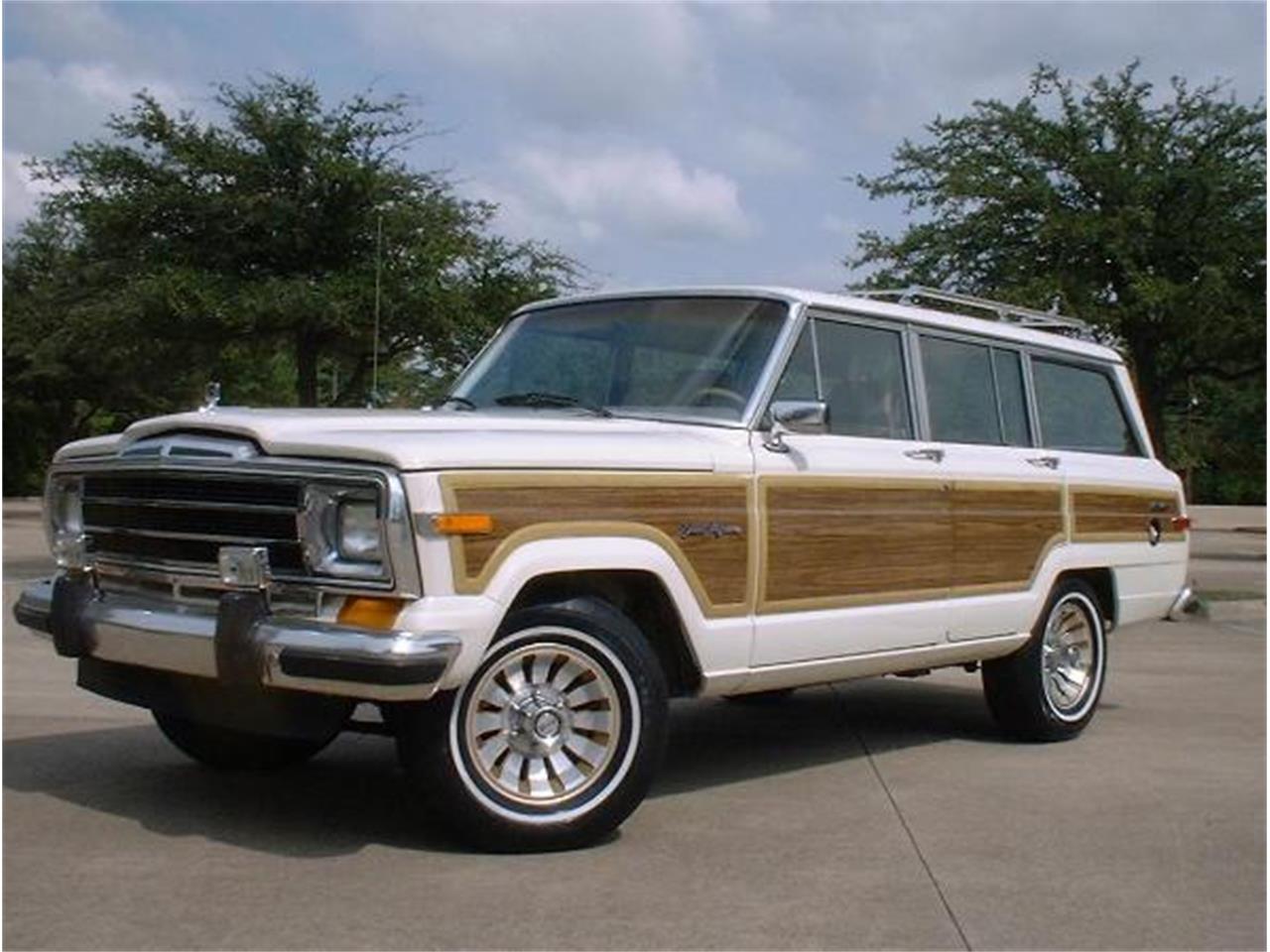
Key Specifications of the 1987 Model
Understanding the core mechanicals of the 1987 Grand Wagoneer is crucial for any prospective buyer. While robust, these components define its performance and potential maintenance needs.
- Engine: The heart of the 1987 Grand Wagoneer is the AMC 360 cubic inch (5.9L) V8 engine. This carbureted powerplant was rated at approximately 140 horsepower and 280 lb-ft of torque. Known for its torque-rich nature and relative simplicity, it provides ample power for cruising, though it is not a speed demon. Its reliability is generally good, but it is notorious for being thirsty.
- Transmission: Power is routed through a durable Chrysler TorqueFlite 727 3-speed automatic transmission. This unit is a workhorse, known for its longevity and smooth shifts.
- Drivetrain: The 1987 model featured the Selec-Trac (NP229) transfer case, offering both full-time 4WD for regular driving and part-time 4WD for more challenging conditions, along with a low range. It also included a vacuum-actuated front axle disconnect for improved fuel economy in 2WD mode.
- Suspension: A traditional leaf spring suspension system at both front and rear provides a robust and relatively comfortable ride, especially for a vehicle of its vintage.
- Dimensions: With a wheelbase of 109.9 inches, an overall length of 186.4 inches, and a curb weight typically around 4,500 pounds, the Grand Wagoneer is a substantial vehicle.
- Fuel Economy: Realistically, expect fuel economy in the range of 10-13 miles per gallon (MPG), a figure that reflects its V8 engine, automatic transmission, and full-time 4WD system.

What to Look For When Buying a 1987 Grand Wagoneer: A Detailed Inspection Guide
Purchasing a vintage vehicle requires diligence. Here’s a comprehensive checklist of what to inspect when considering a 1987 Jeep Grand Wagoneer for sale:
-
Rust (The Grand Wagoneer’s Arch Nemesis): This is the single most critical factor. Thoroughly inspect:
- Rocker Panels: Often the first place to rust through.
- Floorboards and Cargo Area: Check for soft spots or patched areas.
- Rear Quarter Panels: Particularly around the wheel wells and below the rear windows.
- Tailgate: Prone to rust, especially around the window and hinges.
- Roof Gutters: Rust here can lead to leaks.
- Frame: Inspect the entire ladder frame for any significant corrosion, cracks, or poorly executed repairs.
- Inner Fenders and Firewall: Don’t forget these less visible areas.
-
Engine Condition:
- Cold Start: Listen for excessive smoke (blue for oil, white for coolant, black for rich fuel), knocking, or ticking noises.
- Leaks: Check for oil, coolant, and power steering fluid leaks. The AMC 360 is known for minor oil leaks.
- Carburetor: Look for signs of fuel leaks, rough idle, or hesitation. A properly tuned carburetor is key.
- Maintenance: Ask for service records. Look for signs of recent tune-ups, fluid changes, and belt/hose replacements.
-
Transmission & Drivetrain:
- Shifting: Test all gears. Shifts should be smooth and firm, not harsh or slipping.
- 4WD Engagement: Test both full-time and part-time 4WD, and low range. Listen for grinding or clunking.
- Transfer Case & Differentials: Check for leaks.
- U-Joints: Listen for clunking during acceleration or deceleration, indicating worn U-joints.
-
Suspension & Steering:
- Sagging: Check if the vehicle sags, especially in the rear, indicating worn leaf springs.
- Shocks: Look for leaks or excessive bouncing.
- Steering Play: Excessive play in the steering wheel often points to a worn steering box or tie rod ends.
- Tires: Check for uneven wear, which can indicate alignment issues or worn suspension components.
-
Electrical System (Notorious for Gremlins):
- Power Windows: Test all four windows. The rear tailgate window is particularly prone to issues.
- Power Locks: Test all doors.
- Gauges: Ensure all gauges (fuel, temp, oil pressure, voltmeter) are functional.
- HVAC: Test the heater and air conditioning. AC systems often need recharging or overhaul.
- Lights: Headlights, tail lights, turn signals, brake lights, interior lights.
- Wipers and Radio: Ensure they work.
-
Interior Condition:
- Leather Seating: Look for cracks, tears, and excessive wear.
- Headliner: Sagging headliners are very common.
- Dashboard & Woodgrain Trim: Check for cracks in the dash pad and fading or peeling on the interior woodgrain.
- Carpet: Check for excessive wear, stains, or mildew.
-
Exterior Aesthetics:
- Woodgrain Siding: Examine the condition of the vinyl woodgrain and the surrounding trim. Fading, peeling, or significant damage can be costly to repair or replace.
- Paint: Look for bubbling, chips, scratches, or poor repaint jobs.
- Chrome: Check for pitting or rust on bumpers and trim.
- Glass: Ensure all windows are intact and free of significant chips or cracks.
-
Documentation: Always request service records, ownership history, and any restoration invoices. This provides invaluable insight into the vehicle’s past.
Common Challenges and Solutions for Grand Wagoneer Ownership
Owning a vintage Grand Wagoneer is incredibly rewarding, but it comes with its unique set of challenges that potential buyers should be prepared for.
- Fuel Economy: As mentioned, the AMC 360 is thirsty. Solution: While significant improvement is unlikely, ensuring the engine is meticulously tuned, the carburetor is in perfect working order, and tires are properly inflated can help. Aftermarket EFI conversions are a popular, albeit costly, upgrade for better drivability and economy.
- Parts Availability: Mechanical parts are generally readily available thanks to shared components with other AMC/Jeep vehicles. However, specific trim pieces, electrical components, and the woodgrain siding can be harder to find or more expensive. Solution: Connect with online forums, specialist suppliers (e.g., BJ’s Off-Road, Team Grand Wagoneer), and salvage yards.
- Maintenance Costs: These vehicles are 37 years old. They will require more frequent and specialized maintenance than a modern car. Solution: Factor in a dedicated budget for repairs and maintenance. Learning to do some basic DIY work can save significant money. Find a mechanic who specializes in older American vehicles or Jeeps.
- Electrical Gremlins: Aging wiring, corroded connections, and faulty switches can lead to intermittent electrical issues. Solution: Patience, a good wiring diagram, and a multimeter are essential. Many issues can be resolved by cleaning grounds and connections.
- Carburetor Tuning: The factory Motorcraft 2150 2-barrel carburetor can be finicky. Solution: Regular tuning by someone experienced with carburetors, or consider upgrading to an aftermarket carburetor or the aforementioned EFI system.
Types and Categories of 1987 Grand Wagoneer For Sale
When browsing listings, Grand Wagoneers typically fall into a few condition-based categories, which directly influence their price.
- Concours/Show Quality: These are meticulously restored or incredibly well-preserved original examples. Every detail is perfect, often exceeding factory specifications. They command the highest prices and are typically found at high-end classic car dealers or auctions.
- Excellent/Driver Quality: These vehicles are in very good to excellent condition, mechanically sound, and presentable for regular driving or weekend cruises. They may have minor imperfections but are largely rust-free and functional. This is often the sweet spot for enthusiasts who want to enjoy their Wagoneer.
- Good/Fair Condition: These are running and driving vehicles but will require varying degrees of cosmetic or mechanical work. They might have some rust, interior wear, or minor electrical issues. They offer a lower entry price point but higher immediate investment.
- Project Car: These vehicles require significant restoration work, potentially including bodywork, engine rebuilds, or extensive interior/electrical overhauls. They are the least expensive to acquire but demand the most time, money, and expertise to bring back to life.
Practical Advice and Actionable Insights
- Set a Realistic Budget: Don’t just budget for the purchase price. Allocate funds for immediate maintenance, potential repairs, and ongoing upkeep. A good rule of thumb is to have at least 20-30% of the purchase price set aside for initial work.
- Always Get a Pre-Purchase Inspection (PPI): Even if you’re mechanically inclined, a professional inspection by a mechanic familiar with vintage Jeeps is invaluable. They can spot hidden issues that might escape an untrained eye.
- Join the Community: Before, during, and after your purchase, join online forums (e.g., IFSJA.org, GrandWagoneer.com forums), Facebook groups, and local classic car clubs. The collective knowledge of these communities is an incredible resource for advice, parts, and troubleshooting.
- Define Your Use Case: Are you looking for a daily driver, a weekend cruiser, an off-road companion, or a show queen? Your intended use will heavily influence the condition and price point of the vehicle you should target.
- Be Patient: Finding the "right" 1987 Grand Wagoneer can take time. Don’t jump at the first one you see. Wait for a vehicle that aligns with your budget, condition expectations, and desired level of commitment.
1987 Jeep Grand Wagoneer Estimated Price Guide
The market for Grand Wagoneers can fluctuate, but the following table provides a general estimate for a 1987 model. Prices are highly dependent on originality, documentation, location, and the seller’s motivation.
| Condition Category | Estimated Price Range (USD) | Key Characteristics / Notes |
|---|---|---|
| Concours / Show | $50,000 – $100,000+ | Flawless, museum-quality restoration or exceptionally preserved original. Everything works perfectly. Zero rust, perfect paint, new interior, fully rebuilt mechanicals. Often professionally restored. |
| Excellent | $30,000 – $50,000 | Very strong driver. Mechanically sound, minimal to no rust, very good paint and interior. May have minor imperfections consistent with age. Ready to drive and enjoy immediately with confidence. |
| Good | $18,000 – $30,000 | Solid driver. Mechanically reliable but may have cosmetic flaws (faded paint, minor interior wear, minor rust). All major systems functional but may need some attention (e.g., AC recharge, minor electrical repairs). Good candidate for improvements. |
| Fair | $10,000 – $18,000 | Runs and drives but needs significant work. Noticeable rust, worn interior, mechanical issues requiring repair (e.g., engine leaks, transmission slips, suspension work). Best for those willing to invest time and money. |
| Project Car | $3,000 – $10,000 | Non-running, significant rust, major mechanical failures, or extensive body damage. Requires full restoration. Suitable only for experienced restorers with a large budget and workspace. Value often depends on completeness of parts. |
Note: These are estimates and market conditions can vary. Factors like desirable colors, low mileage (verified), and extensive service records can push prices higher within each category.
Frequently Asked Questions (FAQ)
Q: Is the 1987 Jeep Grand Wagoneer reliable as a daily driver?
A: With proper, consistent maintenance, a well-sorted 1987 Grand Wagoneer can be a reliable daily driver. However, it’s an almost 40-year-old vehicle and will require more attention and preventative maintenance than a modern car. Be prepared for occasional issues and higher running costs.
Q: What is the typical fuel economy of a 1987 Grand Wagoneer?
A: Expect around 10-13 miles per gallon (MPG). It is not known for its fuel efficiency due to its V8 engine, automatic transmission, and full-time 4WD system.
Q: Are parts for the 1987 Grand Wagoneer hard to find?
A: Mechanical parts (engine, transmission, drivetrain) are generally available due to shared components with other AMC and Jeep vehicles. However, specific interior trim, exterior woodgrain, and some electrical components can be harder to source or more expensive. Dedicated aftermarket suppliers and online communities are excellent resources.
Q: What are the biggest issues to watch out for when buying one?
A: Rust is the primary concern, especially in rocker panels, floorboards, and the tailgate. Electrical issues (power windows, gauges) and carburetor problems are also common. A thorough pre-purchase inspection is crucial.
Q: Is a 1987 Grand Wagoneer a good investment?
A: Well-maintained, original, and low-mileage examples of the 1987 Grand Wagoneer have shown consistent appreciation in value, making them a potentially good automotive investment. However, restoration costs can quickly outweigh potential gains if the vehicle is in poor condition.
Q: Can I convert the carbureted engine to fuel injection?
A: Yes, several aftermarket companies offer electronic fuel injection (EFI) conversion kits for the AMC 360 engine. This is a popular upgrade for improved drivability, cold starts, and slightly better fuel economy, but it is a significant investment.
Conclusion: Embracing the Grand Wagoneer Lifestyle
The 1987 Jeep Grand Wagoneer for sale is more than just a listing; it’s an invitation to own a piece of American automotive history. Its blend of classic aesthetics, surprising luxury for its time, and genuine off-road capability creates a driving experience unlike any other. While ownership comes with its unique set of considerations, including the ever-present threat of rust and the need for dedicated maintenance, the rewards far outweigh the challenges for the passionate enthusiast.
To truly enjoy a Grand Wagoneer, approach the purchase with informed enthusiasm. Do your research, inspect thoroughly, and connect with the vibrant community of owners. When you finally slide into that comfortable leather seat, grip the classic steering wheel, and embark on your first journey, you’ll understand why this iconic SUV continues to captivate hearts and turn heads. It’s not just a vehicle; it’s a lifestyle, a statement, and a timeless classic that promises adventure and enduring appeal.

